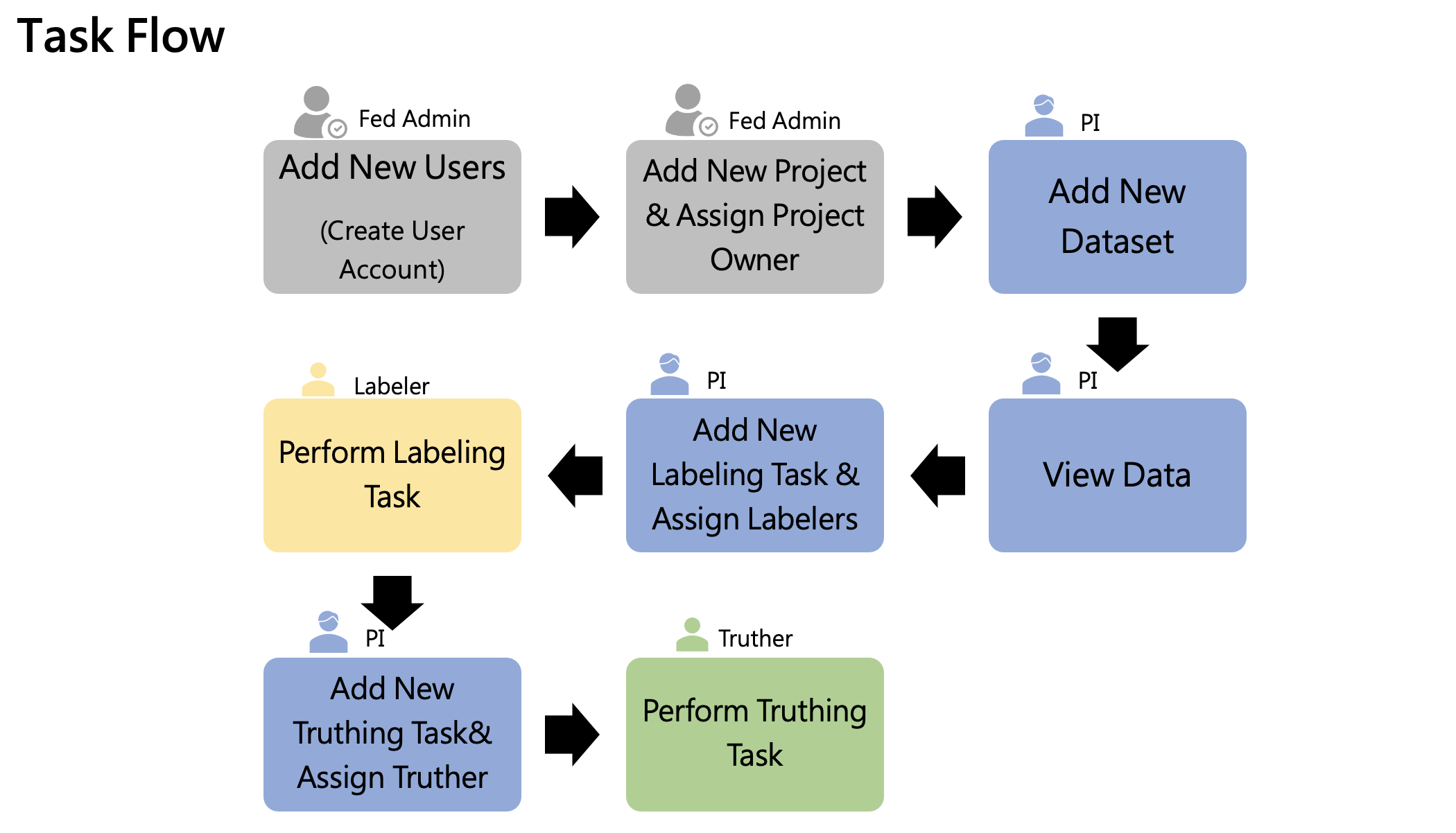1.5 Task Flows
The flowchart below shows each step of the complete data pipeline of FLP:

- Data Collection: This initial step supports multiple data formats, such as tabular, image, and DICOM, and accommodates multiple modes for comprehensive data collection. It involves collecting data from the healthcare system either through manual upload to the platform or through an API, allowing data to be retrieved directly from various sources.
- Labeling: Offering a versatile platform, this step supports various annotation tasks such as classification, detection, and segmentation. Additionally, it incorporates AI-powered smart labeling tools to expedite the labeling process, enhancing efficiency and accuracy.
- Truthing: This step involves verification and validation of the marked material to ensure its accuracy and reliability. Through the review process, errors or inconsistencies in labels can be identified and corrected, thereby improving the quality of the training dataset.
(Note that, data conversion, preprocessing and normalization may be involved in Labeling or Truthing steps) - CDM: As a fundamental element, CDM unifies different data formats into a standardized model, ensuring consistency between datasets. By establishing a common framework, it simplifies data integration and analysis processes, promoting interoperability and data consistency.
- FL/FV: This step facilitates collaborative model training across multiple distributed sites, enabling model development using data from different sources. It includes performance evaluation methods for distributed datasets to ensure the validity and generalizability of models in different environments.
The following tasks are required to go through a Data Governance project from scratch.

Step 1. Create a project owner's account.
Step 2. Create a new project and assign a project owner.
Step 3. The project owner uploads the data that needs to be labeled and creates labeling tasks, assigning them to corresponding labelers.
Step 4. Labelers receive notifications of the labeling tasks and perform image labeling.
Step 5. The project owner creates truthing tasks and assigns them to truthers.
Step 6. Truthers receive review tasks, verify and modify the labeling results as needed.